Welcome to our Community
Wanting to join the rest of our members? Feel free to sign up today.
Sign up
You are using an out of date browser. It may not display this or other websites correctly.
You should upgrade or use an alternative browser.
You should upgrade or use an alternative browser.
What if you dont have a grounded outlet?
- Thread starter Akuichi
- Start date
You're not doomed haha. I had experienced similar issue too for quite a long time and what i did was i grounded one outlet and used my PC or phone charger through it using extension cord. What you have to do is find a soil not cement, and bury a meter long or so (i dont know exactly how long) copper rod into it and connect one end of a wire to the rod and next end to the earth point into the outlet which is usually the middle and big one.. i know its vague but i guess you get an idea.I think I'm doomed, I'm not sure if our 3 prong outlets are grounded or not, I don't think I can make them go and call an electrician to rewire our house if so. Is it possible to make a single grounded outlet DIY?
having a outlet without physical ground results in static shocks and video distortions on your system, (i.e you see wavy lines on your monitor, get shocked when your elbow or forearm touches a connected usb cable etc.) but all is not lost, if you have a stander voltmeter you can use it to test your outlet.
first you need to connect the black wire to the voltmeter's com port, and the red wire to the v(ohm) port.
like in the picture below
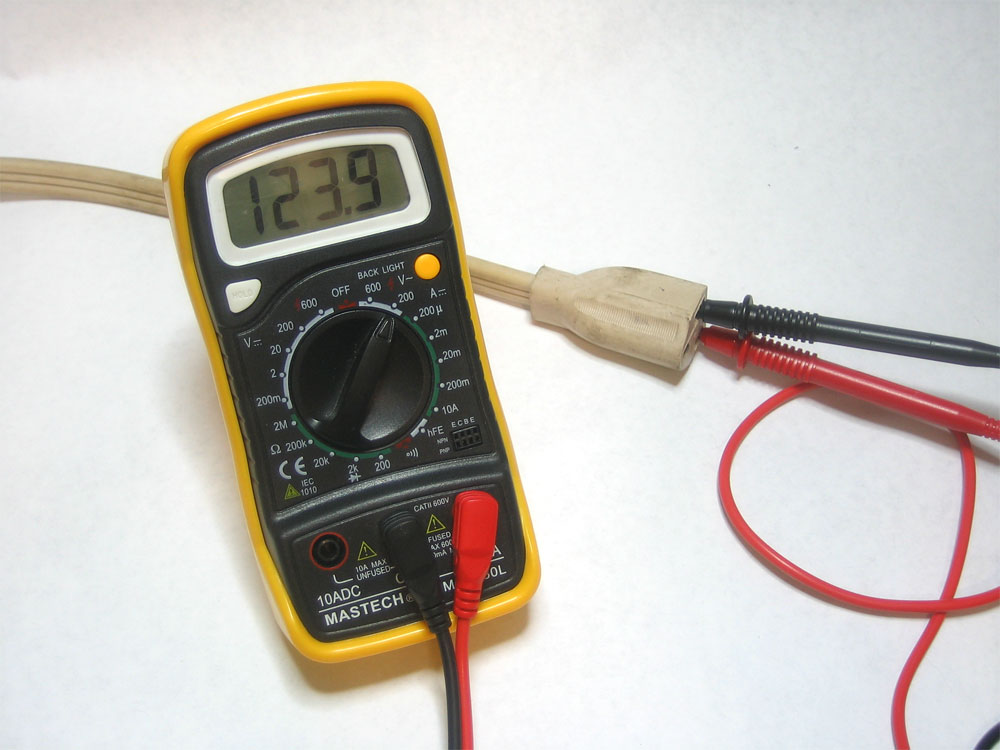

the longest slot is the common ground , that's where your black tester goes, the other slot is "hot" (gets you electrocuted!! caution!! do not touch!!) that's where the red wire goes, always connect the ground wire first then the red wire, and remove the red wire first then the black wire.
to test if you're grounded leave the red wire connected, remove the black wire and insert it in the small round hole.
if you get the same voltage as when you took your first reading your grounded, if you do not get any reading, change the red wire to the other slot.
if you get a reading , then your house is reversed wired, ( you need to fix this as you can experience over heating load wires, short circuits etc.)
if you still dont get any reading then your not grounded.
to ground an outlet you will need :
1 copper coated grounding rod.
10 gauge wire
1 grounding rod clamp
you can buy everything at your local hardware store for under 30 bucks
find the closest place to drive the rod into the ground, could be outside your house,, drilling a hole through your wall, or drilling directly into the floor.
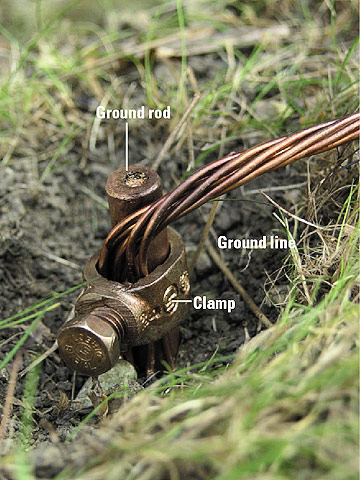
(keep in mind that any conducting material can be used as a grounding rod, (i.e iron rod, copper rod, etc. but grounding copper rods are recommended)
drive the rod into the ground until its barely visible, then clamp the wire to the rod, and finish driving it into the ground, then drive the wire to the outlet, you can fasten it to the wall with a cable race way to hide the cable.
then turn off the electrical power, ( pull the circuit lever)
test to see if you have power in the outlet, once you're sure there is no power , unscrew the outlet,
at the very bottom there is one screw, this is the ground terminal.
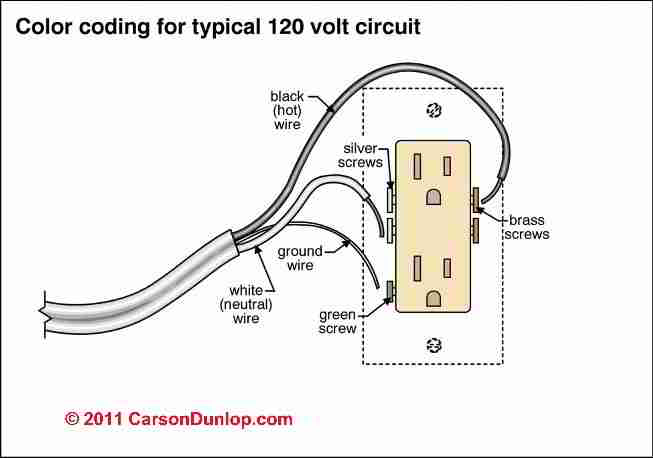
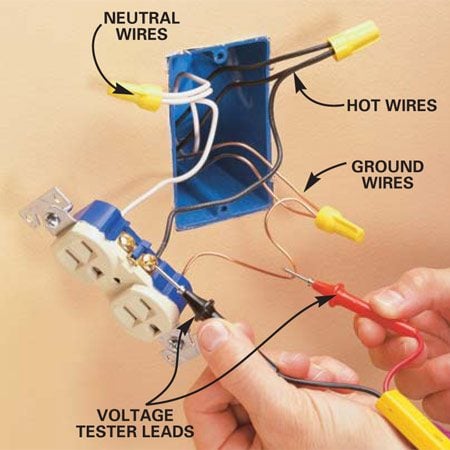
connect the ground cable to the terminal and screw int tight.
then replace your outlet , check that there is no continuity with the wires (i.e the wires are not touching anything)
finally turn the power back on.
first you need to connect the black wire to the voltmeter's com port, and the red wire to the v(ohm) port.
like in the picture below


the longest slot is the common ground , that's where your black tester goes, the other slot is "hot" (gets you electrocuted!! caution!! do not touch!!) that's where the red wire goes, always connect the ground wire first then the red wire, and remove the red wire first then the black wire.
to test if you're grounded leave the red wire connected, remove the black wire and insert it in the small round hole.
if you get the same voltage as when you took your first reading your grounded, if you do not get any reading, change the red wire to the other slot.
if you get a reading , then your house is reversed wired, ( you need to fix this as you can experience over heating load wires, short circuits etc.)
if you still dont get any reading then your not grounded.
to ground an outlet you will need :
1 copper coated grounding rod.
10 gauge wire
1 grounding rod clamp
you can buy everything at your local hardware store for under 30 bucks
find the closest place to drive the rod into the ground, could be outside your house,, drilling a hole through your wall, or drilling directly into the floor.

(keep in mind that any conducting material can be used as a grounding rod, (i.e iron rod, copper rod, etc. but grounding copper rods are recommended)
drive the rod into the ground until its barely visible, then clamp the wire to the rod, and finish driving it into the ground, then drive the wire to the outlet, you can fasten it to the wall with a cable race way to hide the cable.
then turn off the electrical power, ( pull the circuit lever)
test to see if you have power in the outlet, once you're sure there is no power , unscrew the outlet,
at the very bottom there is one screw, this is the ground terminal.


connect the ground cable to the terminal and screw int tight.
then replace your outlet , check that there is no continuity with the wires (i.e the wires are not touching anything)
finally turn the power back on.
If you use metal bodied appliance on a non-grounded outlet you are most likely to get shocked if there are loose wires inside the appliance.
holyyy, thanks guys. I'll try to install a ground on a single outlet once I get funds. Also what if it's a 220 volt outlet, are there differences in wiring color? It kinda sucks because ungrounded outlets are so common here in my country, 2-pronged everywhere.
yeah, there is a very big difference, when you have 220v installation you basically have 2 hot wires ( 110 v) hence 220v and 1 ground wire.
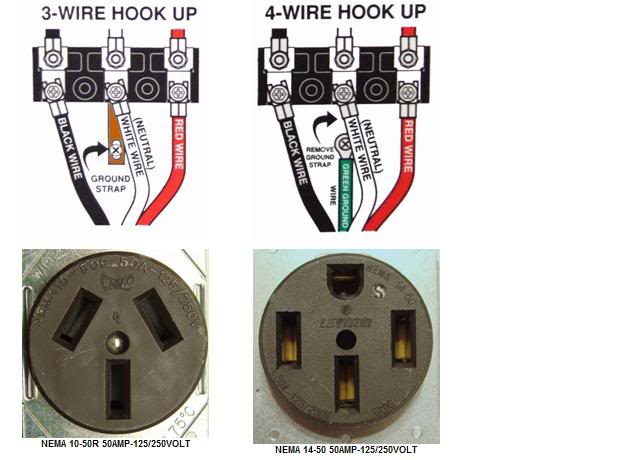
here you typically have 3 or 4 colors , but sometimes you can have 2, (depends on who installed it, color just lets you know whats where but they can be almost any color, that's why you need the voltmeter.
here both red and black are hot, and the white is neutral ground. also if you do have 220 both readings will give you 110v reading except the ones that are parallel to each other, also since you don't have an idea if you have 220 or not, its best to change your voltmeter to 500v or whatever your reading is after the standard 200 v reading.

here you typically have 3 or 4 colors , but sometimes you can have 2, (depends on who installed it, color just lets you know whats where but they can be almost any color, that's why you need the voltmeter.
here both red and black are hot, and the white is neutral ground. also if you do have 220 both readings will give you 110v reading except the ones that are parallel to each other, also since you don't have an idea if you have 220 or not, its best to change your voltmeter to 500v or whatever your reading is after the standard 200 v reading.
Sponsored
Topics You Missed
-
How to Convert a Microsoft Outlook PST File to MBOX File without Losing Data.
- Latest: williamdavidson
-
-
-
-
Latest Posts
-
How to Convert a Microsoft Outlook PST File to MBOX File without Losing Data.
- Latest: williamdavidson
-
-
-
-

